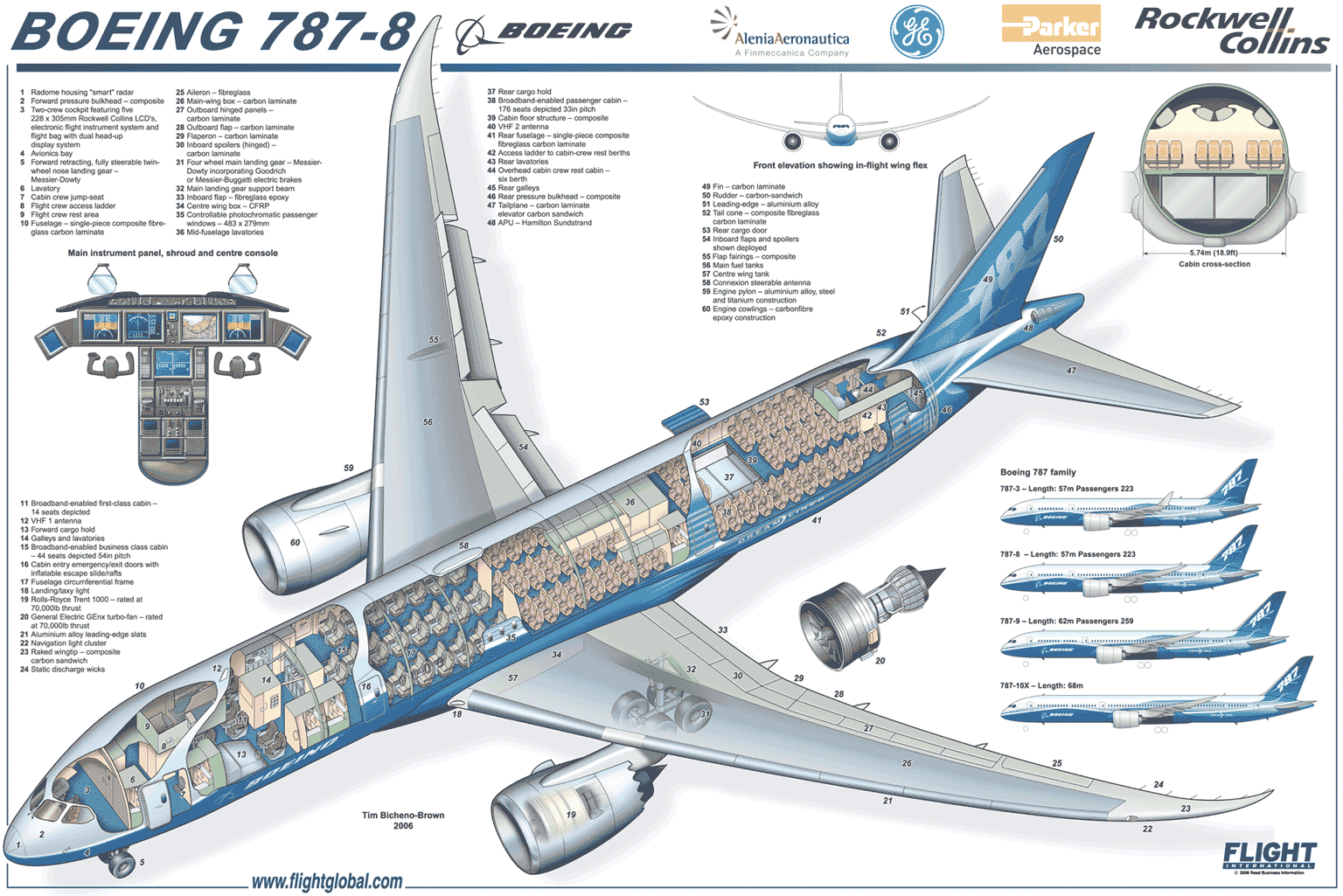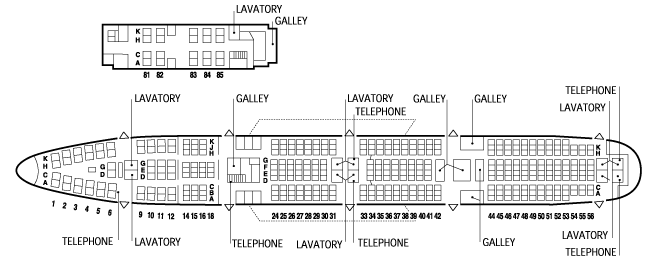By: Logan Dierker
Airplane Terms and Diagrams

This image is the cockpit schematic of the flight deck or otherwise known as the cockpit of the Boeing 757-200PCF. This is where the pilots control the airplane. This is not the cabin of the airplane. This applies to all airplanes.

Source: http://www.gunsbase.com/
This is the Boeing 787-8 plane schematic. It shows the cockpit area and seating, the flight attendants workspace, and the passenger seating. The flight attendant area and passenger seating is what is called the cabin of the airplane.
These images provide a visual for the definitions of the flight deck (aka the cockpit) and the cabin of the plane. Due to the nature of this topic, a quick explantion of terms is needed in addition to these terms. FFDO stands for Federal Flight Deck Officer. The cockpit of the plane is the space at the front of the plane where the pilots fly the airplane. The term cockpit is synonymous with “flight deck.” The cabin of the plane is the space where the passengers sit and the spaces that the flight attendants work. After 9/11, all commercial plane cockpit doors were reinforced and new locking systems were installed. The cockpit door is locked and only the pilots and flight crew have the code to open it. The pilots can lock the door to where the code that the flight crew knows will not open the door in the event that a terrorist forces a crewmember to open the door. This locking system was chosen to prevent an attacker from being able to take control of the airplane. However, it is impossible for the cockpit to be completely impenetrable due to pressurization issues (Gun Owners). This validates the need for pilots to be armed while in the cockpit for self-defense and protection of the airplane and all aboard.
The Boeing 747-400


Image URL: http://www.airlines-inform.com/commercial-aircraft/Boeing-747-400.html
(Both images found on same website)
This is the Boeing 747-400, it is second to the newest Boeing 747-8, but there was not a picture for the 747-8 (the 747-8 typical 3-class has 467 passenger seats (Plane Specs). The Boeing 747-400 typical 3-class seating holds 416 passenger seats (Plane Specs). The cabin width for a 747-400 is 6.13 meters (Plane Specs). This visual shows how many people can be on one flight and how tight the space is. There are hundreds of people on a plane at any given time, and that’s how many lives the pilot is responsible for. If the pilot loses control of the plane, say if someone hijacks a plane, then that is how many people’s lives are in danger in one environment. This also shows how it is no wonder why Federal Air Marshals have to be trained so extensively and have very good aim in order to control situations that arise in airplanes. Based on this, the FFDO Program should not allow pilots to carry their loaded weapons in the cabin of the plane, because they are not trained sufficiently. The pilot became a pilot for a reason, because they want to fly the airplanes. This should be their job. Not to be trained in addition to be the equivalent of a Federal Air Marshal. This would just give terrorists an opportunity to target pilots while they are in the cabin because they know that the pilot would have a loaded weapon on his person.